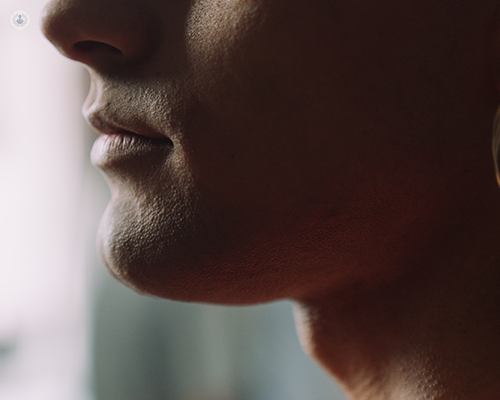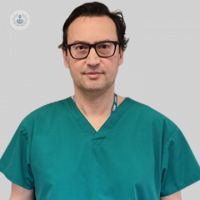Sialendoscopy: A diagnostic and therapeutic tool for the salivary glands
Written in association with:A sialendoscopy is a minimally invasive procedure that uses a micro-endoscope to examine and treat diseases of the salivary glands.
Here, award-winning consultant head and neck / maxillofacial and oral surgeon – robotic and facial reconstructive surgeon, Mr Konstantinos Karavidas, provides an expert insight into a sialendoscopy.

What are the indications for a sialendoscopy, and how does it compare to other diagnostic and treatment options for salivary gland disorders?
A sialendoscopy is a modern and well-established procedure for the diagnosis and treatment of benign obstructive salivary gland diseases. Compared to an ultrasound, a sialendoscopy is an adjunct to obtain the full diagnosis of a disease, along with an ultrasound scan and frequently, a sialogram.
With regards to treatment, a sialendoscopy is less invasive compared to open surgery and it delivers less radiation compared to other radiologically-guided procedures.
What are the different types of sialendoscopies available, and how do you select the appropriate one for a patient?
There are several types of sialendoscopies available in the market, and up to three main brands that operate.
I use both diagnostic and therapeutic sialendoscopies. The main difference between them is that with diagnostic sialendoscopies, you can only perform diagnostics, whereas with therapeutic sialendoscopies, you have the option of applying treatment by intervening. Both sialendoscopies can either be separated in a modular one, which allows you to change the operating sheet, or they can be included in one single scope, with both the diagnostic and the therapeutic parts of the scope.
The choice of sialendoscopy depends on whether the procedure has a diagnostic or a therapeutic element. It can also vary depending on the age of the patient; smaller-size scopes are typically used for children while slightly larger-size scopes are generally used for adults.
What are the potential complications associated with a sialendoscopy?
A sialendoscopy is a minimally invasive procedure with very few complications.
The worst outcome that could potentially happen is that either:
- The duct (the pipe that brings saliva inside the mouth) is perforated, causing some leakage which can seal on its own most of the time. The surgeon, however, has to abandon the procedure if it reaches this point.
- There is a very rare complication, which is the jamming of the basket or the wires within the duct. At this point, the minimally invasive procedure will have to be converted to an open procedure.
There might be a bit of pain and minor swelling after the surgery, which usually subsides within 72 hours.
How do you perform a sialendoscopy?
A sialendoscopy can be performed either in a local outpatient setting or in theatres under general anaesthetic. The choice is down to the patient’s compliance, as well as the diagnosis and the overall treatment planning which might have to be slightly combined with an open approach.
Thus, for simpler cases, local anaesthetic is used. For more complicated cases or combined endoscopy cases, general anaesthesia is used instead, and most of the times, the procedure is performed as a day case.
What are some post-operative care measures that should be taken to ensure optimal healing and recovery after a sialendoscopy?
I tend to advise painkillers, and avoidance of any intense and very savoury meals, for the first 48 hours after a sialendoscopy. I don’t typically prescribe antibiotics for patients.
Usually, patients do quite well. Cases are followed-up within a month and discharged back to the care of their GP.
If you or your child require a sialendoscopy and you would like to discuss your options with an expert, don’t hesitate to book an appointment with Mr Konstantinos Karavidas via his Top Doctors profile today.


